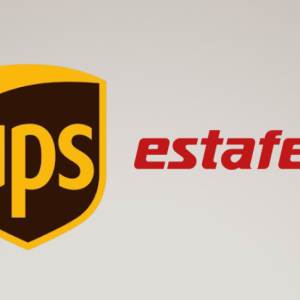Reliable Deliveries Through an Experienced Mexican Partner

STORY INLINE POST
Q: How does Estafeta work to preserve and grow its market share in Mexico, while competing directly with international giants?
A: Estafeta has always focused on the local market as we are specialists in Mexican logistics. Estafeta operates its own fleets, which gives us operational advantages and more control of the entire operation. We can react faster to changing environments and adjust accordingly.
Estafeta has been growing in recent years. Currently, we operate six aircraft and our land fleet is close to 6,500 vehicles. Estafeta also has a strong infrastructure arm with operation centers in more than 170 cities and over 12,000 employees across Mexico.
Q: What have been the main milestones achieved by Estafeta during your over 13 years as CEO?
A: We grew the company three times during the past 10 years and we have grown from 7,000 to 12,000 employees since the pandemic. Estafeta, as a service company, prioritizes employees' well-being and client service. One of our values is to be a human company and we want our people to be well. We strive to offer competitive salaries and adequate benefits to all our collaborators. In that sense, we can affirm that we have very good compensation levels.
Estafeta was certified as a Great Place to Work and in the last evaluation we entered the list of the Top 30 companies in Mexico. The company employs its own operators who ensure quality service at all times. We do not rotate operators or subcontract drivers per day or per hour. We guarantee good service through our own drivers and vehicles.
Q: What opportunities and challenges has this e-commerce boom presented to Estafeta?
A: The e-commerce market is still growing. We saw it boom during the past two years but there is still room for growth. Traditional retail is moving online across the world. For example, 50 percent of the total retail sales in China are done online. In the US, this number is around 20 percent and in Mexico, it is close to 10 percent. In only two years, this figure doubled from 5 percent to 10 percent. E-commerce represents a large opportunity and Estafeta is investing heavily in it.
In 2021, Estafeta grew its air fleet with one more plane and this year we are investing US$100 million to grow our operational centers and land fleet.
Q: What makes Estafeta the ideal logistics partner for companies and the industrial sector?
A: Estafeta is also focused on industry solutions. We identified 12 interesting industries that we expect will grow in the coming years, one of which is e-commerce. Another crucial sector for Mexico is the automotive industry. Estafeta is this sector’s ideal partner thanks to its infrastructure and knowledge of the country as a 100 percent Mexican company, among many other reasons. We comply with regulatory changes, such as the Carta Porte and the outsourcing reform, which are crucial for transport operations. Companies working with Estafeta do not have to worry about any legal or compliance problems.
Estafeta’s coverage includes the entire Mexican territory and the company is flexible. We can offer both standard and tailor-made solutions. If our client has specific needs, we can get a proposal very quickly, since all decisions are taken in Mexico.
Q: How does Estafeta help automotive clients in their supply chain operations amid ongoing challenges within the sector?
A: Estafeta offers excellent solutions for its clients. For the automotive industry, we implemented a special service with three delivery options: same-day delivery, next-day delivery and ground service, which takes one to three days to deliver depending on several factors. We offer automotive clients the combination of our network in Mexico and fast, dedicated services at a competitive cost. This combination has brought great results to our automotive clients.
We offer great traceability too. This might seem common in logistics but for automotive companies, we implement traceability solutions related to shipments or parcels and integrate the data quickly. Estafeta operates its own network to manage hazardous materials, which is important as well for the automotive industry. In addition, we offer return logistics for spare parts or packaging totes.
Q: How is Estafeta contributing to greener logistics?
A: Estafeta participates in several yearly reforestation initiatives. We also signed the UN’s Global Action Plan as a guidance toward more sustainable operations, which include recycling and the optimization of our network. If we drive fewer kilometers, we pollute less. In addition, this year, we carried out an initiative to adopt electric vehicles (EVs). Estafeta conducted tests with two companies and is buying its first 30 EVs in 2022. It is challenging due to Mexico’s reduced EV offer compared with the EU and the US but it is a good start.
The company also launched the Envíos Verdes project alongside the government of Mexico City to make deliveries using bicycles, a useful strategy across short distances. Finally, Estafeta also offers customers the opportunity to pay a small fee to compensate for pollution and we buy carbon offsets.
Q: The accelerated growth of the logistics sector impacts the environment. What strategy has Estafeta implemented to address last-mile delivery challenges?
A: The growth of e-commerce has impacted heavily the number of packages that have to be delivered per stop. If you deliver to a shop, you leave 10 or 15 boxes at one stop. However, now with e-commerce, these boxes go directly to the final customer and you have one box per stop. This impacts the environment, traffic and pollution. The entire industry must analyze how to address that problem.
One of the main trends within the delivery industry is urban logistics. It is all about cities. Connecting different cities is quite easy but last-mile delivery is the complex part due to traffic and numerous routes, among other challenges. Estafeta is implementing the PUDOS (pick-up and drop-off points) project to manage several contact points in a city. Through this project, Estafeta delivers packages to PUDOS and consumers can pick them up at their convenience. This initiative creates win-win scenarios for everyone involved. Senders pay less, our operation becomes less costly and shops that act as a PUDOS will benefit from more sales once the buyer picks up the parcel. This model is working well in the EU. Estafeta has over 2,000 PUDOS in Mexico.
Q: What are the main challenges of implementing PUDOS for last-mile deliveries in the Mexican context?
A: The first challenge could be IT. Some shops serving as PUDOS use Estafeta’s system but others use their own systems. For example, we are currently partners with Circle K and 7-Eleven and in both cases, they use their own systems so integration could be a challenge.
On the other hand, there is a cultural issue. Consumers need to be open to walking a few steps to pick up their parcels. Also, Estafeta has noticed an interesting phenomenon emerging. We have several mom-and-pop shops within our network using Estafeta’s solutions and Mexicans are more receptive to these shops because they have known the person running them for 20-30 years. It is a matter of trust. This is very specific to Mexico and will work well in the future.
Estafeta is a Mexican multinational shipping, supply chain management and logistics solutions company founded in 1979. It employs over 12,000 people. Estafeta Carga Aérea has a fleet of six aircraft, operating within 12 cities in Mexico and one in the US.








 By Antonio Gozain | Senior Journalist and Industry Analyst -
Thu, 06/23/2022 - 16:00
By Antonio Gozain | Senior Journalist and Industry Analyst -
Thu, 06/23/2022 - 16:00










